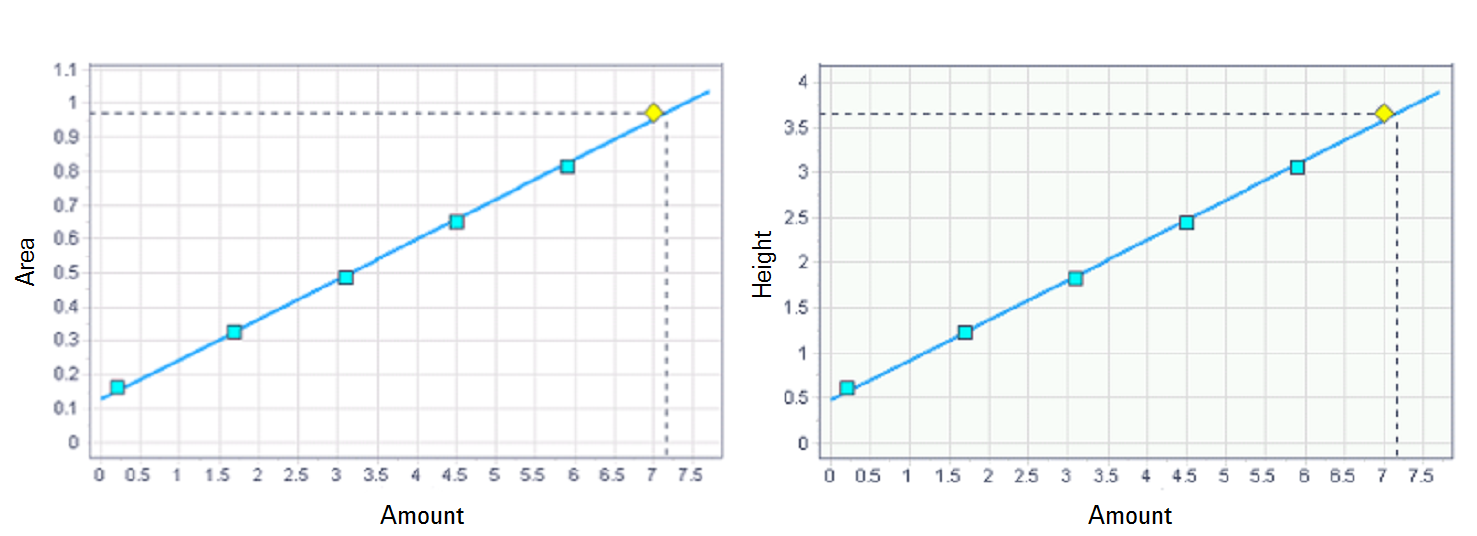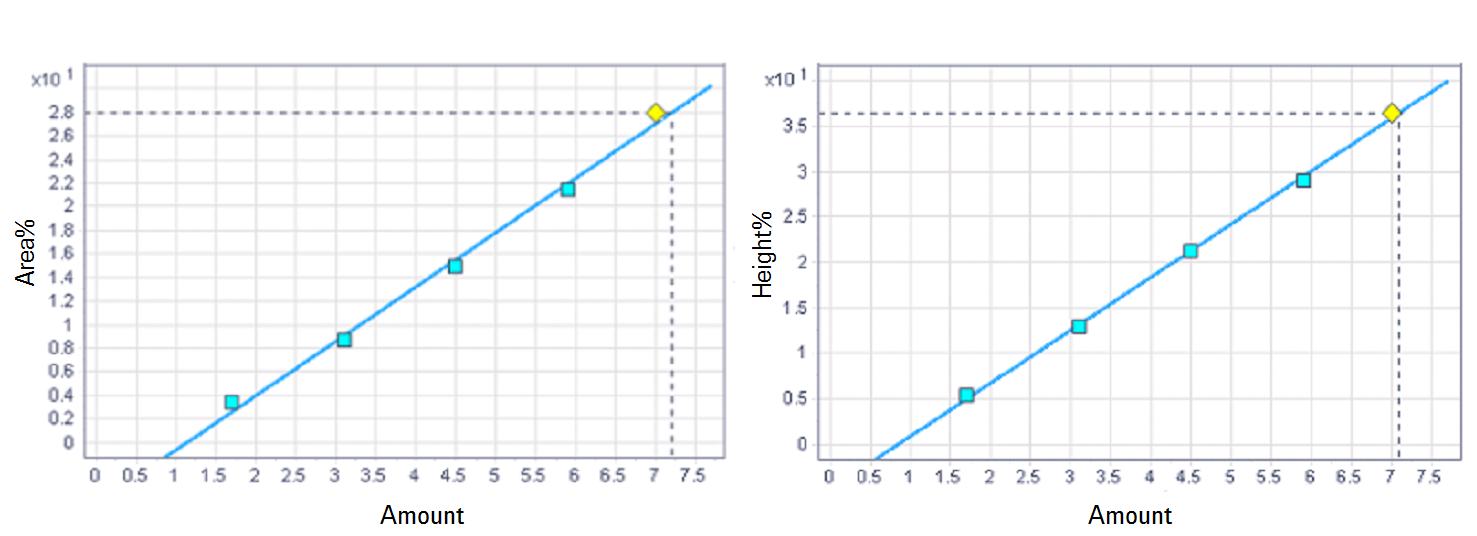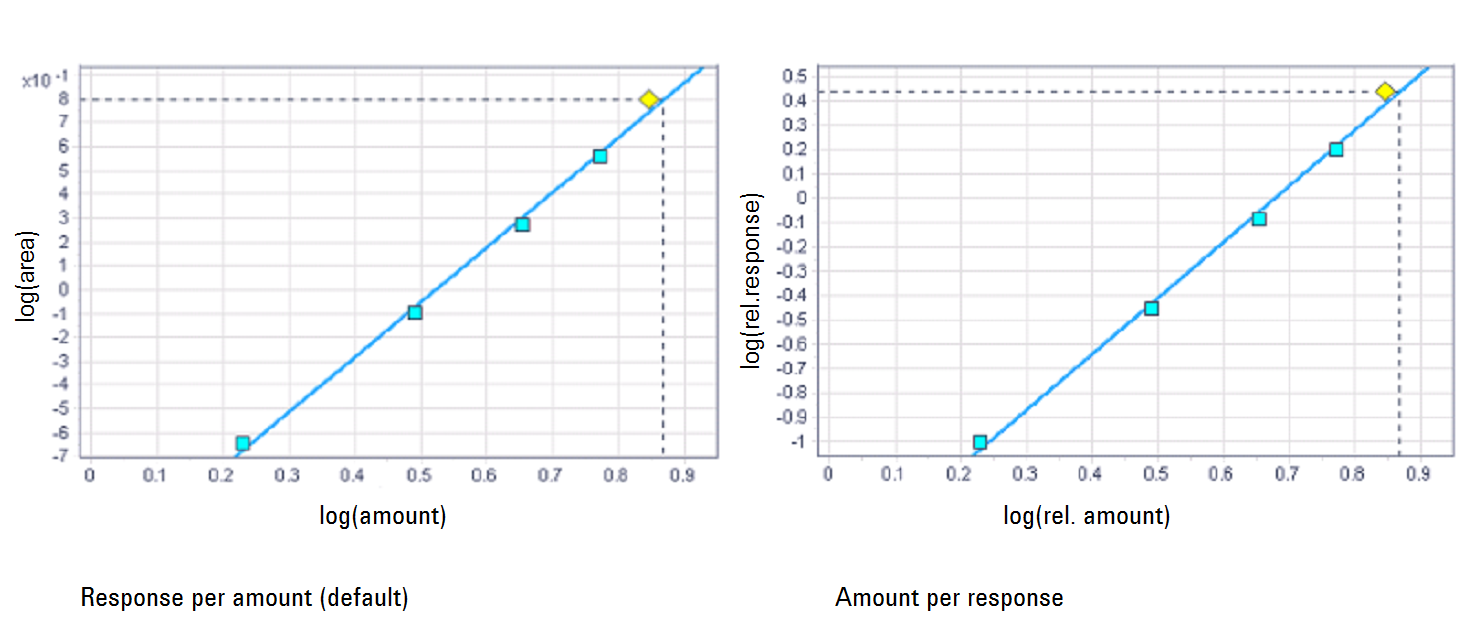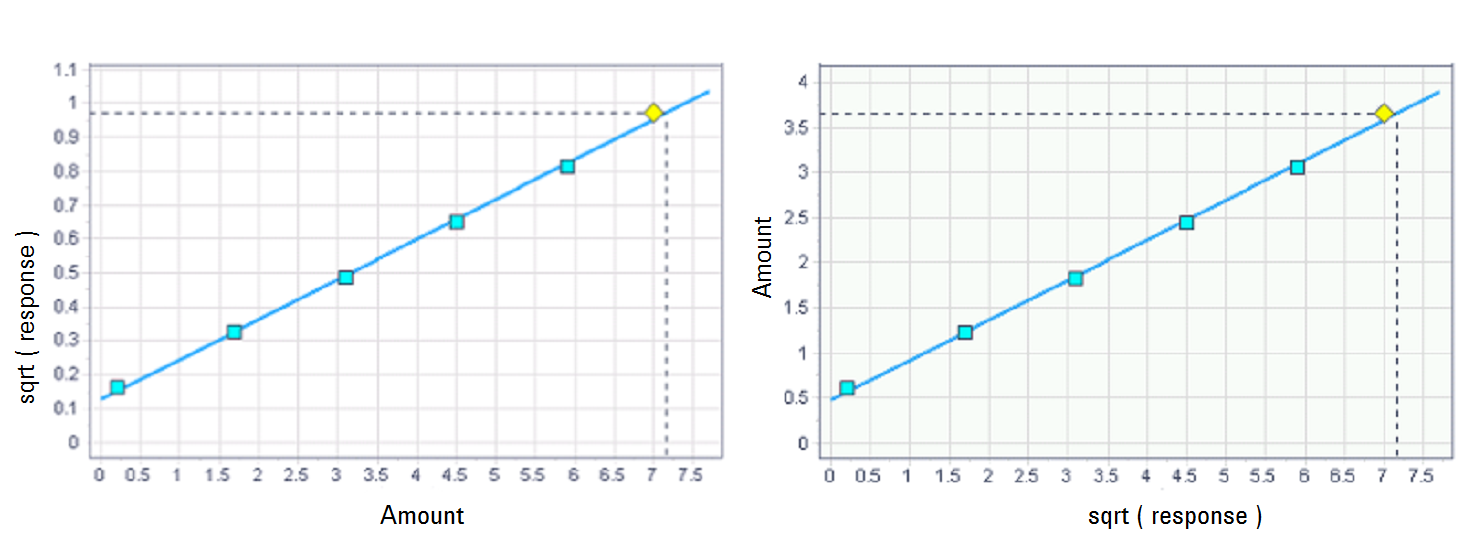Response type and response factor
There are different settings that allow you to choose which values are plotted on the x and y axis of the calibration curve:
RF definition
The response factor (RF) is a measure of the extent to which the signal changes if a compound is detected. It is defined as the ratio of the response to the compound amount, or vice versa. In the general method settings under RF definition, you can switch between Response per amount (default) or Amount per response. If you change this setting, you swap the x and y axis of the calibration curve.
RF calculation:
RF = Response/Amount
or
RF = Amount/Response
Type of response
The response itself can be defined as Area, Area%, Height, or Height%. You can choose the response type individually for each compound.
Relative responses with ISTD
If you use internal standards (ISTDs) in your sample, relative amounts and relative responses are shown in the calibration curve. The calculation depends on the RF definition.
RF calculation:
RF = (Response/ISTD Response) / (Amount/ISTD Amount)
or
RF = (Amount/ISTD Amount) / (Response/ISTD Response)
Log/log curve model
If you select the curve model log/log for a compound, the amount and response are both plotted as logarithmic values.
You can use the log/log model in combination with both RF definitions, with all response types, and with internal or external standards.
RF calculation for the examples shown above:
RF = log(Response) / log(Amount)
RF = log(Response/ISTD Response) / log(Amount/ISTD Amount)
Scaled response
If you select a scaled response, the response is plotted as a calculated value while the amount is plotted without modification.
RF calculation for the example shown above:
RF = sqrt(Response) / Amount
or
RF = Amount / sqrt(Response)





